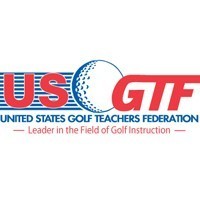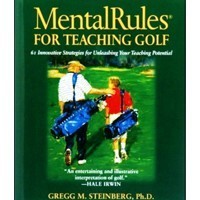Blog
SE Tourney on Tap for this Month; Central to Follow
Avis, Budget Offering World Cup Deals
USGTF Launches Re-Designed Site
Summer Edition of Magazine Now Out
“PRO” File – Touring Professional Brian Harman
Go Slow Like Brooks Koepka
Steinberg Book Available to USGTF Members
U.S. OPEN
An Organized Pro Equals Happy Students
 Hap Hazard is a golf teaching pro at Bucket O’ Balls Driving Range. He’s normally on time for his first lesson of the day, but as the morning wears on and morphs into afternoon, Hap is far behind on his lesson schedule. Mr. Smith arrives for his noon appointment, only to find that Hap can’t see him until 12:20. Mr. Smith decides to cancel the lesson and leaves.
Hap is actually happy to see this, because he can now get to his 12:30 lesson on time. The client, Mr. Jones, is someone to whom Hap gave a lesson two months ago. Mr. Jones keeps referring back to what Hap told him at that time, but Hap has no idea what Mr. Jones is talking about.
At the end of the week, Hap, an independent contractor who depends upon the range to collect his lesson fees, receives his check, but it doesn’t seem nearly enough for what he did. However, he has no way of disproving the check is wrong, so he has no choice but to accept the amount.
Hap Hazard is an example of a teaching professional who is highly disorganized. What are the mistakes Hap makes?
•He books 30-minute lessons 30 minutes apart, which makes him late for each subsequent lesson;
•He doesn’t keep records of the lessons he gives, so he doesn’t know what instruction he gave to past students;
•He doesn’t keep financial records, so the range kept money that rightfully belonged to him.
While this is a worst-case scenario, there are times where even the best among us may fall short occasionally. It takes great effort to keep an organized teaching operation.
If a teaching professional is busy enough to the point that he or she has to book back-to-back lessons all day, it doesn’t make much sense to schedule the start of a lesson at the same time the previous lesson concludes. Someone is going to get short changed. A 5- or 10-minute buffer between lessons is helpful, and if the teacher is extremely busy, it makes sense to occasionally build in a 15- or even 30-minute break to recharge and make sure things are organized.
A teaching professional should also take notes regarding each lesson. Nothing is worse than a student returning after a long absence and the teacher having no clue what instruction was given the last time. The instruction might be so far removed from the previous teachings that the student will be confused. And asking the student to remind us what was worked on can make us look a little less competent in the eyes of that student.
It also goes without saying that a financial record of each lesson should be kept. Hap’s arrangement is not uncommon, and it also makes sense to go over the day’s lesson receipts at the end of the day.
Other ways to be organized include having complete information about each student, including contact info, for future marketing purposes. It also doesn’t hurt to send birthday wishes or an occasional free golf tip.
It should go without saying that a golf teaching professional should be prepared for each lesson. If training aids are among a teacher’s arsenal, they should be readily available. Nothing is worse for the teacher to figure out that a certain training aid needs to be used, only to find it’s been left in the car or someplace in the cart barn.
Since video is becoming more frequent (al-though we find in 2017 that most teachers still don’t use it routinely, interestingly), making sure the equipment is in good working order, complete with charged batteries, is important.
Much of the advice given in this article seems like common sense, but you might be surprised how many times, or how many professionals, fall short in these departments, even if only occasion-ally. An organized pro equals happy students, and if they’re happy, they’re certain to return – and they might even tell their friends.
Hap Hazard is a golf teaching pro at Bucket O’ Balls Driving Range. He’s normally on time for his first lesson of the day, but as the morning wears on and morphs into afternoon, Hap is far behind on his lesson schedule. Mr. Smith arrives for his noon appointment, only to find that Hap can’t see him until 12:20. Mr. Smith decides to cancel the lesson and leaves.
Hap is actually happy to see this, because he can now get to his 12:30 lesson on time. The client, Mr. Jones, is someone to whom Hap gave a lesson two months ago. Mr. Jones keeps referring back to what Hap told him at that time, but Hap has no idea what Mr. Jones is talking about.
At the end of the week, Hap, an independent contractor who depends upon the range to collect his lesson fees, receives his check, but it doesn’t seem nearly enough for what he did. However, he has no way of disproving the check is wrong, so he has no choice but to accept the amount.
Hap Hazard is an example of a teaching professional who is highly disorganized. What are the mistakes Hap makes?
•He books 30-minute lessons 30 minutes apart, which makes him late for each subsequent lesson;
•He doesn’t keep records of the lessons he gives, so he doesn’t know what instruction he gave to past students;
•He doesn’t keep financial records, so the range kept money that rightfully belonged to him.
While this is a worst-case scenario, there are times where even the best among us may fall short occasionally. It takes great effort to keep an organized teaching operation.
If a teaching professional is busy enough to the point that he or she has to book back-to-back lessons all day, it doesn’t make much sense to schedule the start of a lesson at the same time the previous lesson concludes. Someone is going to get short changed. A 5- or 10-minute buffer between lessons is helpful, and if the teacher is extremely busy, it makes sense to occasionally build in a 15- or even 30-minute break to recharge and make sure things are organized.
A teaching professional should also take notes regarding each lesson. Nothing is worse than a student returning after a long absence and the teacher having no clue what instruction was given the last time. The instruction might be so far removed from the previous teachings that the student will be confused. And asking the student to remind us what was worked on can make us look a little less competent in the eyes of that student.
It also goes without saying that a financial record of each lesson should be kept. Hap’s arrangement is not uncommon, and it also makes sense to go over the day’s lesson receipts at the end of the day.
Other ways to be organized include having complete information about each student, including contact info, for future marketing purposes. It also doesn’t hurt to send birthday wishes or an occasional free golf tip.
It should go without saying that a golf teaching professional should be prepared for each lesson. If training aids are among a teacher’s arsenal, they should be readily available. Nothing is worse for the teacher to figure out that a certain training aid needs to be used, only to find it’s been left in the car or someplace in the cart barn.
Since video is becoming more frequent (al-though we find in 2017 that most teachers still don’t use it routinely, interestingly), making sure the equipment is in good working order, complete with charged batteries, is important.
Much of the advice given in this article seems like common sense, but you might be surprised how many times, or how many professionals, fall short in these departments, even if only occasion-ally. An organized pro equals happy students, and if they’re happy, they’re certain to return – and they might even tell their friends.








